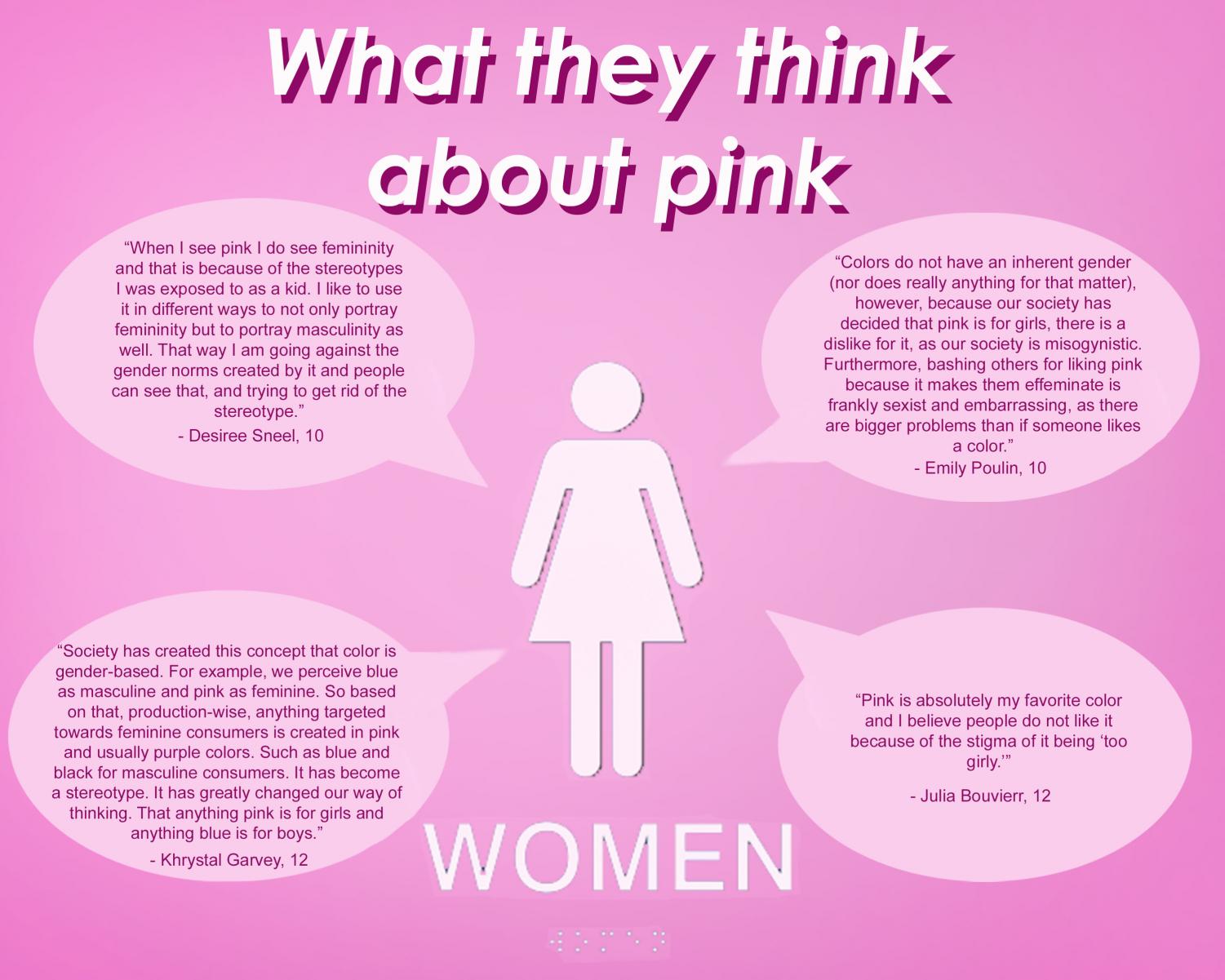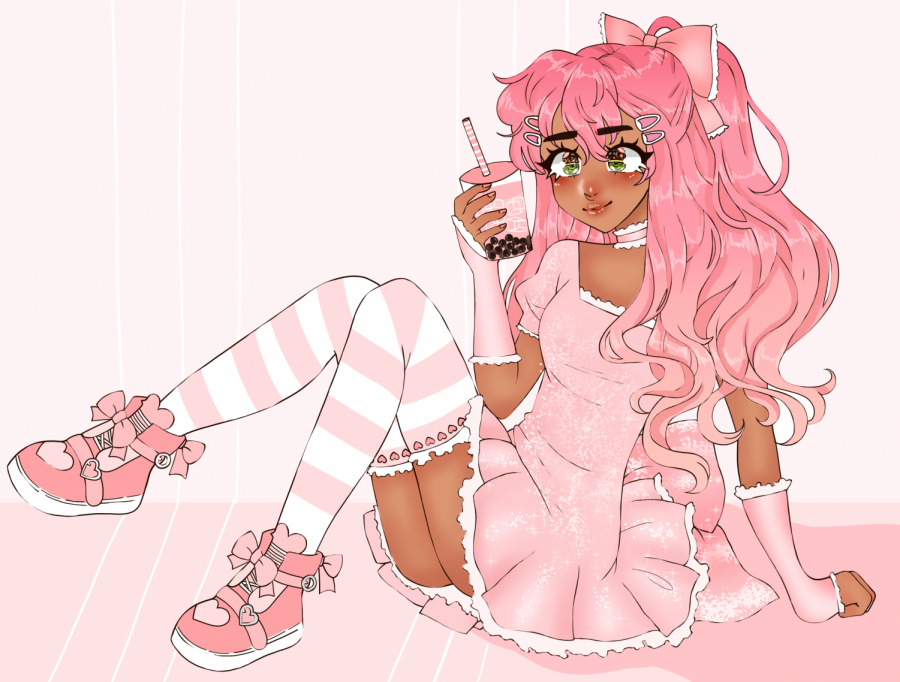The pink problem
photo by Bethany Barker
The correlation between femininity and the color pink has created a stigma around the color as shaming girls for something they were taught to like is accepted.
Walking through your local supermarket picking up necessary goods you notice your basket looks eerily similar. Between the headset, calculator, razors, shampoo, and even pens, your entire basket is the same color: pink. Even beyond commercial marketing, the color’s scope of influence determines even the color scheme of baby showers, where the phrases “blue for boys” and “pink for girls” are taken extremely seriously.
While baby showers are a cute tradition where families can celebrate welcoming a new life into the world, assigning infants a color they have to associate with for the rest of their life is rather intense. Pink is just a color that anyone should be allowed to enjoy, free of the implications of gender and the stereotypes that come with it.
Why is being a woman associated with the color pink in the first place?
Up until the early 1900s, children only wore white until they were about 6. Without the influence of gender, this colorless clothing was assigned for its practicality, mostly so that parents could easily bleach out any stains their messy children created.
This notion changed with the heavier push for gender roles during the 1930s and WW1, where men were associated with the color of strength and masculinity: pink. Ideas certainly change throughout time, as pink became a more feminine color under the influence of figures like Rosie the Riveter and Marilyn Monroe, who genuinely enjoyed the color, but for a society that has progressed so far since the early 20th century, associating the color pink with a symbol of a woman’s fragility and weakness is a backward step.
Whether or not a woman enjoys the color pink provides no tangible evidence as to who she is as a person. But while pink is simply a pleasant color, for some it is a symbol of breast cancer awareness. In the 1990s, Charlotte Haley started the movement of wearing pink ribbons to bring attention to the limited federal funding going towards preventing breast cancer. As the movement gained traction, Alexander Penny and Evelyn Lauder chose the specific shade of pink used in the ribbons “150 Pink” not because pink has to be associated with femininity, but because it was a calming, playful, and health-giving color.
Pink is a color that used to represent strength, that now provides strength and community to women battling breast cancer, though it does have a strong background, pink is still just a color that anyone should be allowed to freely enjoy without fear of scrutiny or backlash, yet companies still use its girly association to push a stereotype of what women have to be.
Notorious for its name and implications, the “Pink Tax” refers to prices that differ based on gender. According to a study conducted by the New York City Department of Consumer Affairs in 2015, products marketed towards women cost 7% more than those marketed to men.
Corporations have been getting away with the Pink Tax because of the unreasonable societal standards that women are held to. Though men’s deodorant or shaving cream may be the better all-around performer for a cheaper cost, there is still an underlying pressure to buy gender-specific products for the fear of seeming different. The majority of hygiene products crafted for men are intended to be long-lasting and efficient while those made for women only have the edge of “looking pretty” through packaging. While most men can get away with using a single bottle of Dove three-in-one shampoo, women are expected to constantly have a stock of various hair products, lotions, skincare, and perfumes which of course all have exquisite packaging to match the outrageous prices.
The most heinous example of this is the pens Bic marketed “for Her.” These pens feature inherently feminine things like sparkles and pink, which apparently meant they should also cost $.47 more than what the standard black pens cost although they perform exactly the same. The backlash that the products immediately received brought to light a number of products using the same unnecessary “for her” tactics that previously went unnoticed.
Despite the obvious push for femininity to be associated with pink, those that do favor the color often receive scrutiny for being too girly or stereotypical.
Gamer girls receive the majority of this hate, especially within what should be their own community. Gaming accessories catered towards women such as the Razer Kraken Kitty headset are a perfectly valid option for anyone who wants a headset, and getting a matching keyboard or mouse is a great way to create an aesthetic space one can enjoy spending their time in. Yet, the pink setup is mocked as a sign that someone is significantly worse at gaming than someone with a black or different colored setup.
Pink headsets and pink pens are marketed towards women, so why are they constantly hated for embracing stereotypically feminine colors? The shame towards whether someone favors a color or not has reached a ridiculous point so that girls look down on their own gender, afraid of being seen as too feminine. There are some interests that should be criticized, especially those that violate laws, but the amount of aggression surrounding girls that choose to like pink is unwarranted. Liking things categorized as feminine does not also mark someone as weak, and it should not. Even men are afraid to wear something as simple as a color lest they be ridiculed by their peers, and we should all be upset.
It is hard to erase stigmas so heavily ingrained into society, but it is also the job of women to support each other and to stop making fun of those that enjoy pink things. Something as insignificant as a color preference should not determine one’s worth, skill or femininity. The color palette of your baby shower should not define your future child. Whether you love it or hate it, pink should not be a problem.

Your donation will support the student journalists of Hagerty High School. Your contribution helps us publish six issues of the BluePrint and cover our annual website hosting costs. Thank you so much!







